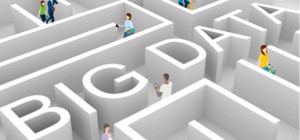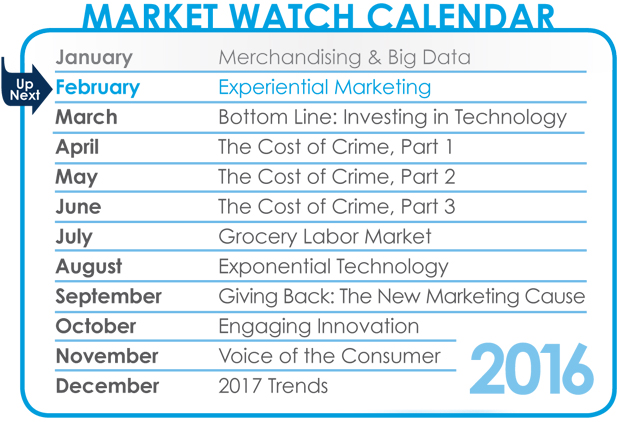“We continue to see an increasing focus on Big Data. It drives a lot of critical components, from routing and billing to tracking and reporting. It’s a huge priority for us.” –Nick Mills, Senior Vice President for SAS Retail Services

By Retail News Insider
Big Data—the virtual flood of information being collected from in-store and online browsing and shopping, social media, mobile devices, beacons, census surveys and numerous other sources—continues to be one of the biggest buzzwords in retail . It’s not the data itself that’s so exciting for retailers and brands, but the patterns and insights that can be gleaned from it in order to drive efficiencies and revenue.
In just a few short years, many leading retailers and brands have begun to harness the power of Big Data to develop targeted products and marketing campaigns, and to engage with consumers in new and personalized ways. Now some are taking the next step, leveraging the latest in Big Data and analytics to reinvent in-store merchandising and drive sales right at the shelf.
Big Data Basics
To understand how retailers are putting Big Data to use, it’s helpful to understand exactly what it is and what makes it special. In the simplest term, Big Data is all of the quantifiable information that’s gathered from online and offline sources. What makes this information different from conventional data are the four V’s: volume, velocity, variety and veracity.
“Volume refers to the vast amounts of data that makes up Big Data,” explains Dr. Lance Eliot, Vice President of Information Technology for Interactions. “As opposed to a single source of data, such as previous sales numbers, Big Data can provide retailers with a multi-dimensional perspective about consumer purchasing behaviors.
“Velocity indicates the rapid pace at which data is now being collected,” Eliot continues. “In prior eras, data was slow to be obtained and even slower to be processed. Today’s Big Data systems get data in real-time or near real-time speeds. This allows retailers and brands to take quick action on the data and analysis they receive.
“Variety is one of the most innovative characteristics of Big Data. The traditional use of numeric data alone has been augmented by additional varieties of data. In retail merchandising, for example, shopper and store data now includes pictures, videos, location-based GPS information, and even tweets and other social media information.”
When it comes to using Big Data to discover patterns and trends, “veracity [accuracy] is essential,” Eliot says. “Collecting large swaths of data from numerous sources is fraught with potential ‘bad data’ that can in turn lead to bad analyses. A key component of using Big Data effectively is employing proper business intelligence systems to weed out any bad data.”
Turning Analysis into Action
As Eliot points out, the real key to unlocking the potential of Big Data is analysis. This involves the use of sophisticated software programs (often called business intelligence systems) to sort through the data and identify key trends and patterns.
“The amount of data can be overwhelming for retailers at first,” explains Matt Rank, Vice President of Analytics and Field Development for SAS Retail Services. “There is all this information out there, but how do you use it to make category management decisions or decide what the best time to do a category reset is? You have to have a way to determine what information is useful and actionable.”
When it comes to retail merchandising, SAS Retail Services, part of the Daymon Worldwide family, uses a proprietary system known as RetailLogic™ to collect real-time data and deliver insights to its associates and retailer and brand partners. For example, with data collected from its in-store merchandising operations, SAS Retail Services can help retailers determine the best timing for category resets, store remodels and other merchandising activities, and predict with a high level of accuracy how long those activities will take.
“Rather than basing merchandising activities on gut instinct or how things have always been done, retailers and brands can now use targeted information to optimize merchandising both at the national and regional levels,” says Rank. “For example, if a retailer was planning resets in both the coffee and canned goods categories, we could use previous merchandising data and sales trends to evaluate whether it makes sense to do equal 8-hour resets in both categories, or split our time differently depending on the sales potential and growth of each category.”
Rank goes on to explain that the data collected during merchandising activities can also be used to drive a variety of other business decisions for retailers and brands. “At Giant Eagle [a mid-Atlantic supermarket chain], CPGs that are part of our dedicated in-store execution program can log in to RetailLogic and see exactly when their new items were placed on shelves—in other words, the speed-to-shelf. They can combine this information with sales data to evaluate the traction of an item, in other words the speed-to-sale. These insights could be used to inform future decisions about product launches and new items cut-ins. That’s information that CPGs have never had access to before.”
In addition, merchandising data can be used to help optimize planogram writing and execution, says Rank. “In the past, planogram writers have primarily looked at solely at sales data or new items. The differentiator with SAS’ planogram service is that we can build in how the merchandising side of things will affect retailers,” he explains. “Using data from previous resets or new item cut-ins, our planogram writers can determine, for example, whether it makes more sense to do a complete reset to cut in a new item or if we could just move a few items around to accommodate the new product. This drives efficiencies for the retailer.”
Ultimately, Big Data-led merchandising also helps drive sales for retailers and CPGs. It can help retailers optimize their product selection to ensure shoppers are able to find (and buy) what they are looking for. It can also help CPGs determine the best times to introduce new products to the shelf in order to garner the highest sales.
Due to this potential, many leading retailers are betting big on Big Data-driven merchandising. For example, Target has an entire “nerve center” dedicated to Big Data and is fusing together data from Facebook, Twitter, Pinterest and a myriad of proprietary and third-party sources to refine its operations, stores, product mix and even supply chain. In addition, department store JCPenney has cited its focus on Big Data-led merchandising initiatives as a key component of its latest store turnaround efforts, which sales numbers indicate are starting to work.
“Whether using Big Data to find new merchandising opportunities to pursue or to discover hidden problems that can then be overcome, Big Data has the capability of providing the fuel to achieve big results for retailers,” concludes Eliot. “The key is to use a system or partner with a service that can sift through it appropriately, so they don’t become overwhelmed with the massive amount of data obtained.”


